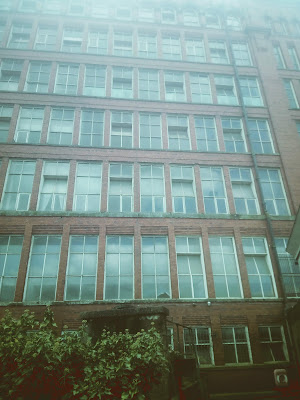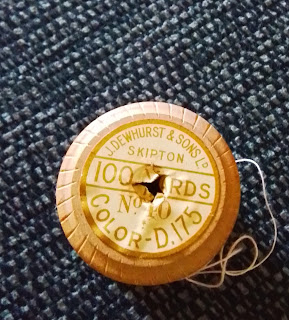The Mills of Derbyshire by Pevsner
"The Buildings of England - Derbyshire " by Nikolaus Pevsner. Extracts regarding ESCC mills.
Cromford:
It was at Cromford that Richard Arkwright started the first successful cotton-spinning mill worked by water power. The foundation date is 1771, and the original mill still stands...it is three storeys high but was originally five, two storeys having been removed after a fire in 1930. The stone block at the W end of the group is also early (before 1777): three storeys, mullioned windows, and lintels and sills forming continuous bands. Of the big seven storey block at the E end, under construction according to Bray in 1777, only fragments remain after a fire in the C.19. The buildings of C.1790 along the road have no windows on the lower floors and suggest a defence against industrial spies and rioters. The buildings, all constructed with timber and not fireproof like those at Belper, are grouped round an irregular courtyard. It looks rather grim now and must always have looked forbidding. Bray tells us that 200 were employed, 'chiefly children. They work by turns night and day'. Least grim is a small brick building with sash-windows , a dental cornice and hipped roof at the W end. Was it the original offices? The water was supplied partly by the Bonsall Stream and partly by an adit for draining mines called the Cromford Mear Sough and was carried across the road by an aqueduct...
In 1783 Arkwright built the Masson Mills a little higher up and round a big bend in the river. These were developed into a big modern building in the early C.20, but the middle is still the original six-storey building with the staircase in a projection and a top cupola. The projection has an odd rhythm of small semicircular between Venetian (one altered) windows. The second mill is of brick and is also still with timber beams. To the S a large red brick building, its Italianate tower with Art Nouveau lettering and the date 1928 (cf Belper East Mill 1912, also for English Sewing Ltd).
Between the two mills the dramatic break through the limestone rocks which is called Scarthin Nick.
Belper:
Spinning Mill (English Sewing Ltd). The importance of Belper as an industrial town began in the C.18 with the development of the textile industry here by the Strutts...Of the Strutts' large complex of mills only one survives, the North Mill, rebuilt by William Strutt in 1804. Iron framed throughout, with arched hollow pot ceilings, it was the culmination of all his advances in metal framing and fireproofing. It is a T shaped building of five storeys, red brick, with an ashlar ground floor, windows with slightly arched tops and large semicircular windows in the gable lighting the top floor schoolroom. The stone archway over the road, of C.1795, connected an earlier North Mill and the West Mill. The Office Block, of the early 1800s, was altered in 1912. Dominant now is the seven storey East Mill, 1912, in red Accrington brick, with square corner towers and a large Italianate tower. It is similar to the English Sewing Ltd 's Masson Mill at Cromford of 1928.




Comments
Post a Comment